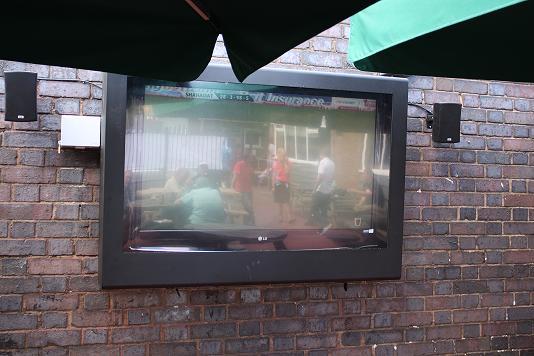Advantages of High Brightness Screens for Outdoor Digital Signage
Posted by: Richard Williams | Posted on: | 0 Comments
Providing outdoor digital signage, for advertising, information or entertainment, requires quite a bit of planning and forethought. Not only have you to think about weather protection, keeping the screen dry and ensuring it is running at reasonable temperatures, but there is also the problem of brightness and making sure the screen and its content is clear.
The sun can cause difficulties in viewing an outdoor display as the screen’s brightness and contrast levels have to be battle against the brightness of the sunshine. On a bright sunny day, this can lead to the screen becoming washed-out, and unreadable, making the outdoor screen next to useless.
This may be something most of us are familiar with at home. On a bright day when watching TV, quite often we have to draw the curtains as the TV becomes difficult to see, but in an outdoor location the problem is magnified—and of course, there is no possibility of shielding the TV from sunlight using curtains.
TV brightness is measured in units of candela per square metre, commonly referred to as nits. The backlight generates the brightness on an LCD screen, and on most consumer and commercial grade screens, the nit value is around 4-500.
In bright sunlight areas, the sun easily overpowers this level of brightness, which is what causes the washed-out effect and the screen becoming unreadable.
Manufactured with a far higher nit value than standard displays, high brightness screens usually exceed 1500 nits. This provides enough luminance to ensure readability, even in the brightest of locations.
For outdoor digital signage, high brightness screens are essential, unless the area is shaded, but the sunlight can also cause other problems for a screen, particularly if the screen is facing the path of the sun.
Sun glare, caused when the sun reflects directly off the screen face, also makes a screen unreadable. Eliminating this reflection with anti-reflective film or glass will provide a solution, but the anti-reflective material will reduce the luminance of the screen. If sun glare causes problems, then high brightness screens are going to be essential to ensure readability.
Post shortlink:
Popular Products
LCD Enclosure
Need armor for your LCD/LED screen(s)? Outdoors or inside the versatile LCD enclosure protects against thieves, vandals & the weather. Installation idea: NFL stadiums.
Outdoor Digital Signage
Exclusive 46” outdoor screen protection. Dubbed the ‘Totem’, due to its distinct design, it repels damage threats, but attracts audiences. Installation idea: Drive-thru restaurants.
Portrait Flat Panel Enclosure
Safeguard your eye-level advertising display screen(s), indoors or outdoors. Completely customizable, add exciting features like touch screen technology. Installation idea: Restaurant frontages.
Indoor Digital Signage
Popular purchase for retail outlets! Great for ‘point of sale’ persuasion, boost your brand with static & motion advertising from a single unit! Installation idea: Mall of America.





